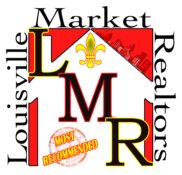Lease Option Homes, Rent-to-Own and Owner Finance in Louisville – 5 Things to Know
Read this before signing anything! When a person isn’t able to buy a home they start looking into Louisville rent-to-own, owner finance, or lease option homes. While would-be buyers often see these as the next best option, it rarely is for the buyer. There is nothing inherently wrong or immoral about selling or renting property with these methods but there is an opportunity to abuse these tools and take advantage of an unsuspecting buyer/tenant. Here are 5 things you need to consider before starting the search for a rent-to-own or lease with option home in Louisville.
1. What are Louisville Rent-to-Own Homes?
A Rent-to-Own Home is just that – you are a tenant renting the home until you make the final payment and then you own it. If you don’t complete the purchase (ie. make the last payment) you may forfeit all the money you paid up until that point. This has been challenged in court where an evicted renter had been there for a number of years and a judge determined they had vested equity in the property. However, if you walk away – you lose it all. You can expect to pay a much higher purchase price and no early buy-outs (paying it off early won’t lower the price).
2. What is a Lease Option Home?
A lease option home (also written Lease/Option or Lease with Option to buy) is a little different from Rent-to-Own. Here, you begin by leasing the home buying an “option” to purchase it any time for a pre-determined price before your lease is up (typically 1-5 years). Again, you are only a tenant until you secure financing on your own to buy it outright. You can expect to pay higher-than-market rent as well as a non-refundable option fee ranging from 1 month to as much as 10k or 20k depending on the value of the property. If you are not ready to buy by the end of the lease, you can often buy another Option by paying more up-front money. Sometimes the option fee and/or a portion of the high rent is earmarked for your down payment. This is done to encourage you to complete the sale or forfeit an even higher amount of money.
3. What is an Owner Finance Home?
An Owner Finance Home is where the owner plays the bank and you sign a deed and become the owner at a closing, the same as a tradition home sale. You can expect to pay a higher price for the property and/or a high interest rate. Often there is a pre-payment penalty. That means you may have to pay 3-5% penalty if you obtain traditional financing to lower the rate and pay it off early.
4. The rate of completion on all 3 is extremely low.
When you have a client with a history of financial difficulties mixed with terms that are not favorable and no oversight, you can expect a high failure rate.

House Dreaming
With owner finance or lease option homes, the buyer/tenant is out of pocket a huge sum up-front. Whether it is from tax returns, inheritance or a lawsuit, the buyer finally has a nest egg and all of it is gone if the deal falls through. With rent-to-own houses they are often overwhelmed with high payments that can ultimately end in eviction. Be aware of the high risk of default and what you stand to lose if it happens. Only with owner financing would you have any clear ownership in the home that would require a foreclosure as opposed to an eviction.
5. Be Careful What You Wish For…You May Just Get It.
The complaint I hear the most often is that when the tenant was finally approvable, they painfully realized that they don’t want the house they are in. Which, if you think about it, makes a whole lot of sense. Often what leads someone to do a lease option, rent-to-own, or owner finance in order to sell is the inability to get market value and dispense of the property in the typical fashion. If the property was fairly priced and free of flaws there would be little motivation to rent it to someone with a history of slow or late payments (or bankruptcy and judgments) instead of taking money and running. So the buyer or tenant gets to stay long enough to see every flaw (neighbors, area, layout, small rooms) and needed repair (electric, plumbing, roof, basement leak, structural damage). Once a would-be buyer is approved for a mortgage all the homes in their price range are available and suddenly the one they are in doesn’t look as appealing – and it isn’t. They only took the house they’re in because it was the only one that took them.
Bonus!!
6. The Big What-If…
A large number of the homes that are leased/sold this way are done so because the current owner needs cash flow. They need the money to pay current mortgages on a vacant house. What if…you pay all the money as agreed but the Seller doesn’t pay the bank they owe money to? That’s right, your only recourse is to sue for your loss when you as a tenant are forced to leave because the Seller failed to pay the mortgage. In other circumstances, the Seller may have judgments against themselves or liens against the house that make a transfer impossible until paid in full. There is equal risk on both parties of these transactions.
Recognize what is driving you to make your decisions and then choose to make better decisions. If you think you will be in a better position to purchase in a year or two then buckle up, tighten the belt, and start a budget and credit building plan. It is tough to be patient but you have to see the long-term benefit of making good decisions.
You can get more information about building your credit here.
To see if you are eligible for a mortgage today, click here.

